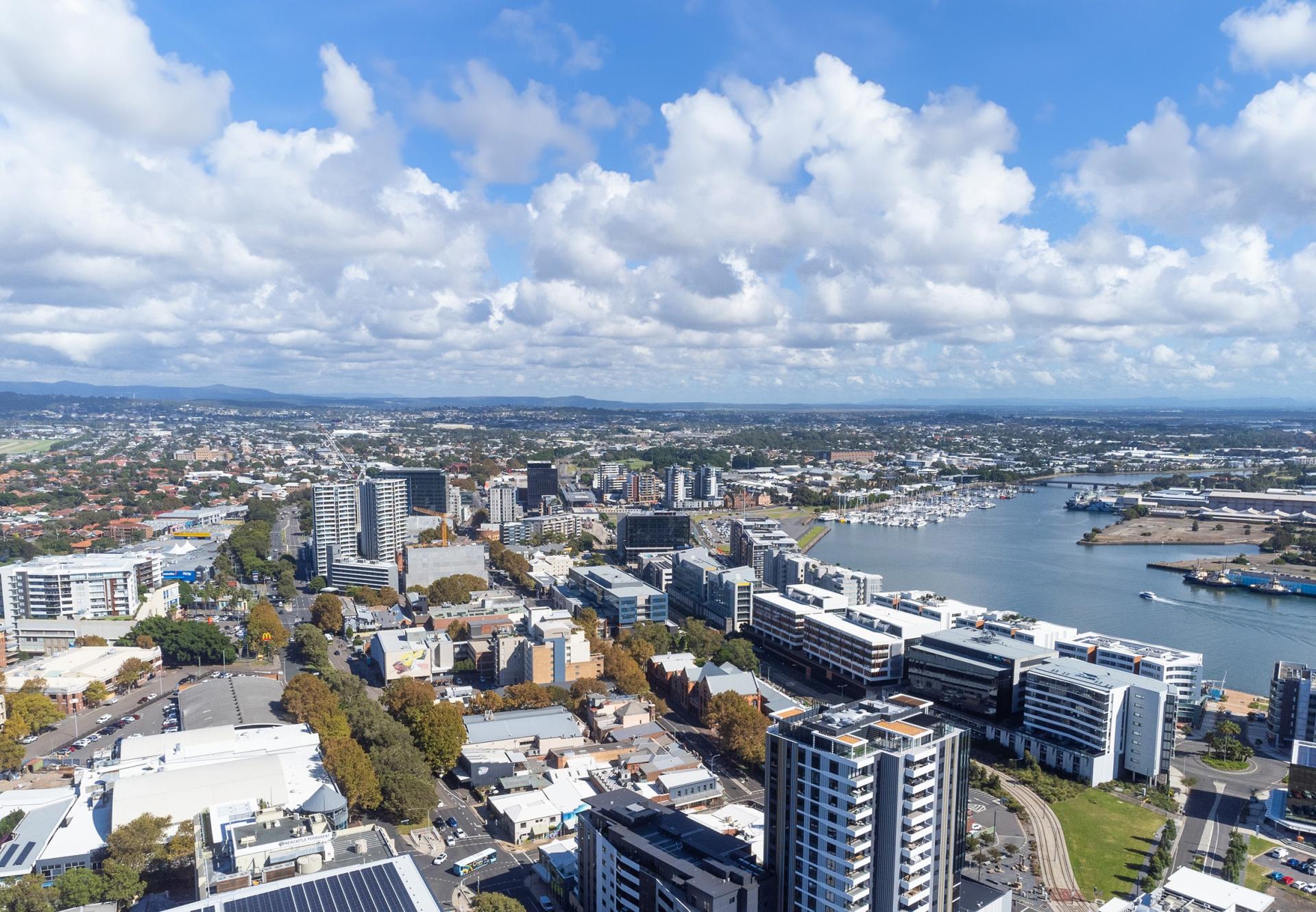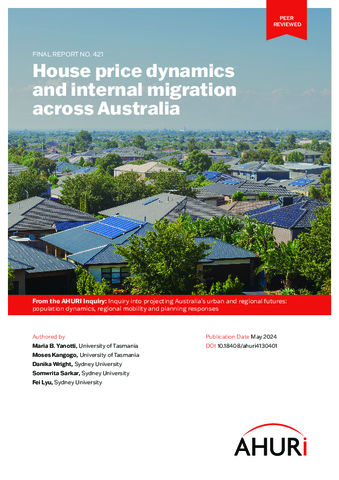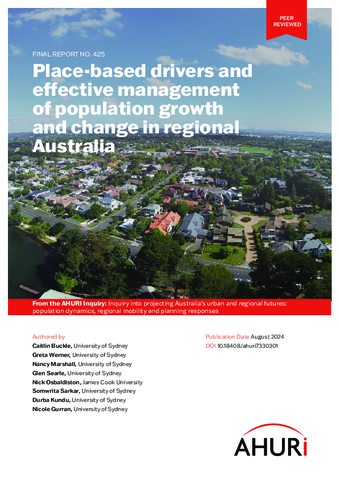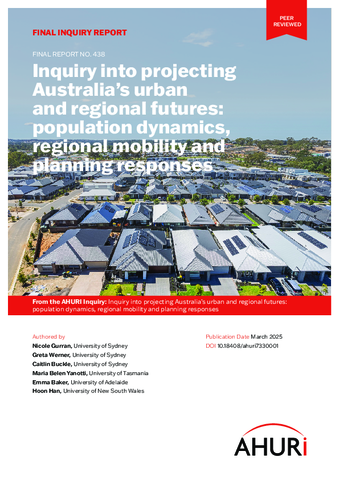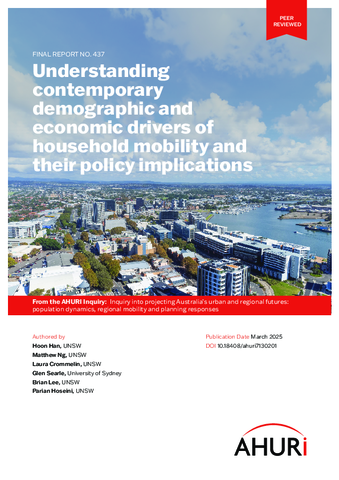From the AHURI Inquiry: Inquiry into projecting Australia’s urban and regional futures: population dynamics, regional mobility and planning responses
What this research is about
This research looked at why people move between urban and regional Australia, and identified the social, economic, demographic and policy factors driving these population shifts.
Why this research is important
Understanding population movements between Australia's capital cities and regional areas is crucial for accurate population forecasting, planning, supporting regional growth and managing community changes.
-
Key findings
Apart from 2013, since 2007 more people have moved from capital cities than to them. The number of people moving to capital cities peaked in 2016.
People aged 65 and over were more likely to leave cities, while those aged 16–25 were more likely to move to capital cities.
People leaving cities had higher household wealth and income compared to those moving to cities. Since 2014, more people from top income groups have been moving out, a trend that began before the COVID-19 pandemic.
Most people (about 70%) moving to capital cities rent privately. In contrast, more people leaving cities become homeowners. Around 38% of those moving from cities own or are paying off a home, compared to 23% of those moving to cities.
Employment is a key reason people move to cities
The top reasons for moving to cities were:- employment (28%)
- personal reasons (25%)
- lifestyle (15%).
Health was the least common reason (3%).
The top reasons for moving from capital cities were:
- lifestyle (28%)
- personal reasons (25%)
- housing (21%)
- employment (20%).
Employment was a reason to move for both groups, but with different motivations:
- 27% of city arrivals and 20% of city leavers moved to start a new job
- 11% of those moving to cities wanted to be closer to work.
Other reasons for moving included housing, lifestyle, education and health
Both groups shared a desire to:- get their own place
- find a larger or better home.
Those moving to cities had greater education motivations (12% vs 3%).
Health was a low priority for both groups.
Policies to attract regional migration can be improved
Current policies focus on attracting workforce sectors, particularly health workers and school educators. There are opportunities to:- target industries supporting regional growth
- develop specific policies for population growth
- expand incentive schemes for sustainable regional development.
-
Policy actions
Address income differences between city and regional residents
Policies need to:- tackle income inequality between city and regional migrants
- prevent lower-income residents being priced out of growing regions
- support social and affordable housing in regional areas.
Take state-specific approaches
Understanding migration motivations can help states develop targeted policies. For example, Victoria might need to support regional university campuses due to high educational migration.Address regional housing and infrastructure
Strategies should:- increase housing diversity
- zone land for residential and employment uses in major towns
- ensure medium-density housing has supporting infrastructure
- provide open spaces.
Improve regional growth through education opportunities
Improve regional education by:- expanding university campuses
- offering online and hybrid learning
- providing scholarships for regional students
- creating affordable student accommodation
- supporting higher education staff retention.
Improve regional growth through employment
Focus on:- expanding incentive schemes
- supporting industries necessary for high-value, sustainable regional growth (e.g. urban planning, construction and renewable energy)
- increasing skilled construction labour through immigration policies.
Improve regional transport and amenities to better support residents
Develop policies to:- improve access to services
- enhance public transport in regional areas
- consider accessibility options for ageing populations.
-
Research design
This study reviewed data from the Australian Bureau of Statistics Census, the HILDA dataset and state and federal government incentive policies.

